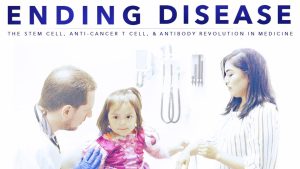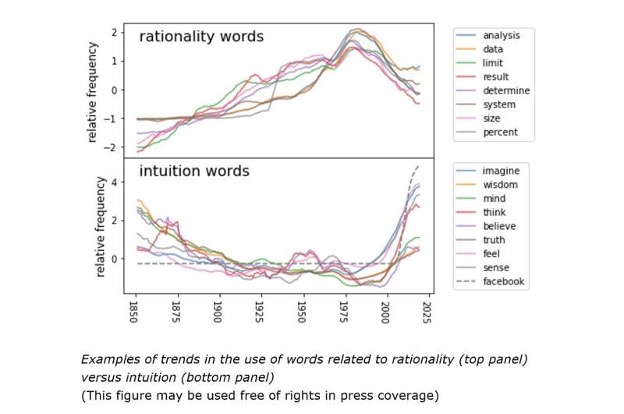 “It’s the need to value balance and respect for life with the promise of science,” former U.S. President George W. Bush argued when announcing his controversial policy blocking federal funding for embryonic stem cell research at a 2001 press conference.
“It’s the need to value balance and respect for life with the promise of science,” former U.S. President George W. Bush argued when announcing his controversial policy blocking federal funding for embryonic stem cell research at a 2001 press conference.
The ban acted as a catalyst, bringing patients, caregivers and scientists together in protest. Celebrities and politicians joined people whose lives were touched by diseases that regenerative medicine (RM) could potentially cure, forming a chorus too loud to ignore. They challenged the government, arguing it had no right to interfere with the progression of science that could change the course of people’s lives.
Ending Disease, a documentary series following patients in the first generation of FDA-approved trials for stem cell, CAR T-cell and antibody therapies, starts with a reflection on this history. Although the federal funding ban remained in place until 2009, when President Barack Obama finally lifted it, the campaigning, which relied heavily on patients’ stories, made huge strides in raising public awareness of regenerative medicine’s potential.
It was arguably people’s stories that led to the formation of the California Institute for Regenerative Medicine (CIRM). In 2004, proposition 71 skipped the legislature by taking the question of whether to fund regenerative medicine directly to the people of California. More than fifty patient and disease advocacy groups were represented in the coalition advocating for the bill to pass. When the bill went to ballot, 59 per cent of voters in the state approved, ushering in a new era for regenerative medicine research by granting $3 billion to CIRM.
Setting the scene, the Ending Disease documentary begins with a montage of quotes showcasing the potential of regenerative medicine: “Twenty years from now, you will not recognize medicine as it is known today;” “It’s a miracle, it’s something that has unlimited potential for curing people;” and, “We are really on the cusp of having this explosion in the whole field of medicine.”
The documentary follows ten trials, each one taking a regenerative medicine approach to treat wide-ranging conditions, such as breast cancer, leukemia, lymphoma, HIV, spinal cord injury, eye disease, and severe combined immunodeficiency (also known as bubble boy disease).
Throughout Ending Disease, we see the human dimension of the clinical trials we so often read about in medical journals. We see patients on a journey that’s every bit as emotional as it is scientific, as they share their hopes for the future and put their faith in these clinical trials. One of these people is Rosie Barrero. Rosie was functionally blind, having been diagnosed with retinitis pigmentosa — an Incurable inherited disease that slowly erodes the retina – as a child. She faced the prospect of losing her vision at the same time she became a new mother. In 2016, Rosie volunteered to take part in a CIRM-funded clinical trial, testing the use of injected stem cells to restore her vision.
“I used to read to the kids every night, and just one night I couldn’t get through the book. I definitely cried about that,” Rosie shares with viewers. Rosie’s daughter Milan adds: “It’s just become our normal, where we accept that she can’t see. She can’t drive, she can’t go for walks by herself. There’s a lot of things she can’t do.”
Rosie received an injection of the stem cell treatment in her left eye. The documentary caught up with Rosie and her doctors six months after the injection.
“I’m a scientist who has looked down a lot of microscopes and seen a lot of lousy results, and I looked down there, and I saw the future,” commented Dr. Henry Klassen of UC Irvine, who oversaw Rosie’s treatment. “I saw something that I never thought I’d see in my lifetime. Here were these green, fluorescent stem cells that just integrated with this retina. They knew the right address, they just plugged right in. I was blown away.”
The treatment significantly restored Rosie’s vision to the point that she could read letters on a screen and, more meaningfully, once again complete daily tasks unassisted. “I can see you. From a slither of my central vision, and through most of my periphery, I can see you,” Rosie tells her daughters.
“Our initial patients couldn’t even count fingers if you put them right in front of their face. But after treatment, they were able to navigate in rooms on their own,” commented Dr. Klassen. “Now, that doesn’t mean they’re reading the paper, it doesn’t mean watching TV, but it means they could find the door. They could avoid tripping over the chair. They could get around. In terms of daily living, I already feel like it’s a success. These people were blind. They had no hope, and now they have hope. Something’s changing… it’s modest. But the fact that this is going in reverse at all to me, we’re there.”
People’s stories not only changed the course of regenerative medicine’s history, but they’re on course to change its future too. A recent study found that in public discourse, use of words reflecting concepts related to personal experience such as senses, spirituality, emotions and personal relationships are surging:
Signals has covered the need for effective science communication and even the importance of an industry mascot in the context of public education, but another crucial component will undoubtedly be patient stories. As regenerative medicines, including cell and gene therapies, make progress on their promise of delivering transformative treatments and cures, public education efforts will benefit from hundreds of people, like Rosie, sharing their stories.
Cal Strode
Latest posts by Cal Strode (see all)
- World AIDS Day: Update on HIV cure research and gene therapies - December 1, 2025
- Headwinds and tailwinds for cell and gene therapy under the second Trump administration - March 11, 2025
- From innovation to international impact: ARM’s 2025 “State of the Industry Briefing” showcases maturing CGT industry - January 20, 2025







Comments